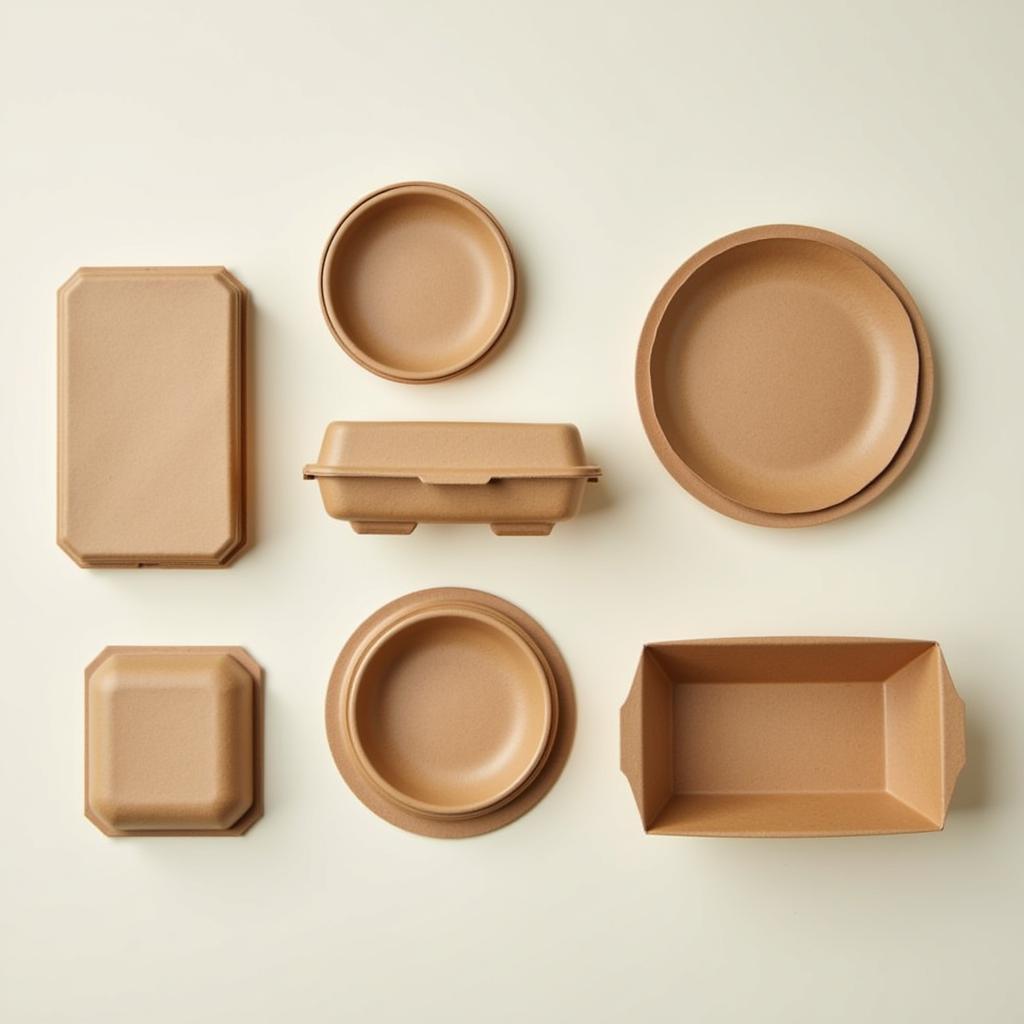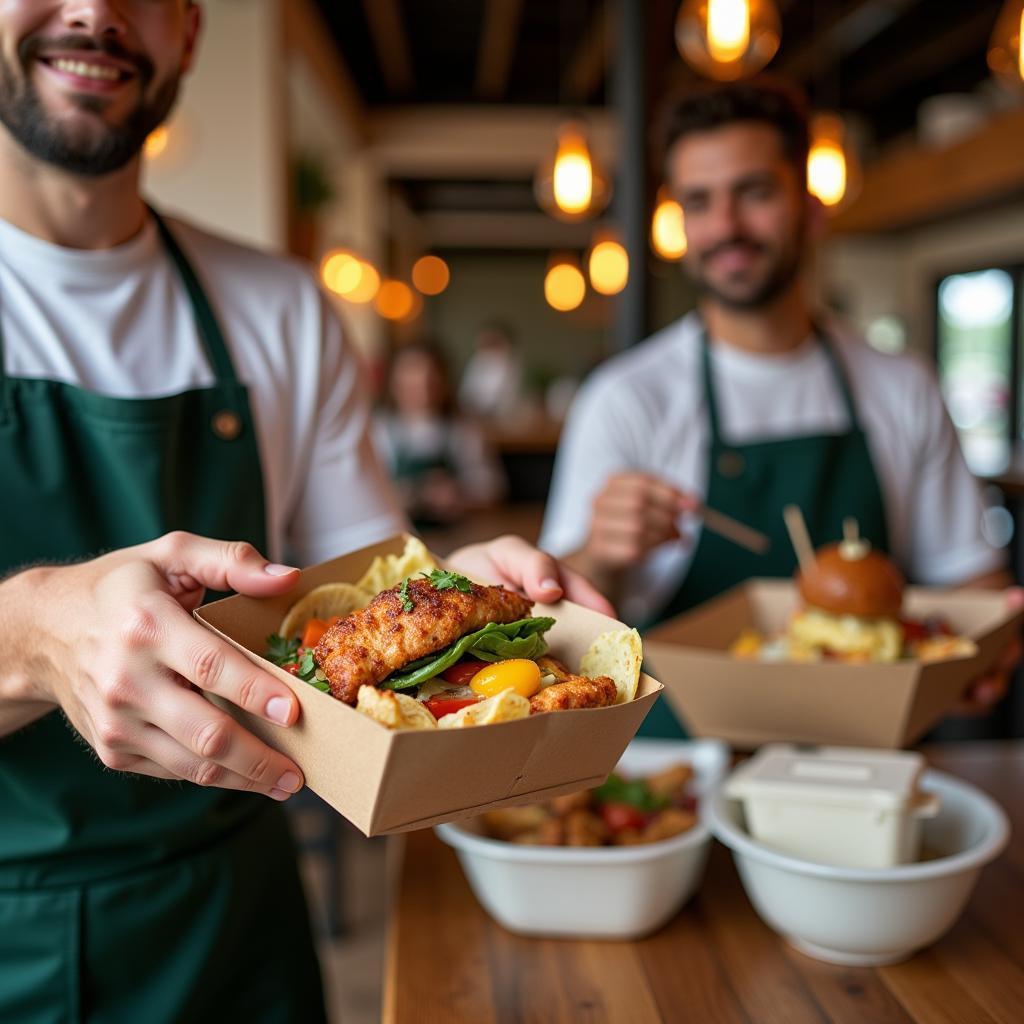The global shift towards sustainable practices has reached every corner of our lives, and the food industry is no exception. A key player in this green revolution is Compostable Food Packaging, offering a responsible alternative to traditional disposable containers.
 Variety of Compostable Food Containers
Variety of Compostable Food Containers
Why Choose Compostable Food Packaging?
Traditional plastic packaging takes hundreds of years to decompose, polluting landfills and harming the environment. Compostable packaging, on the other hand, breaks down into organic matter within a matter of months in a composting facility. This natural decomposition process enriches the soil instead of harming the planet.
“Switching to compostable packaging is a no-brainer for businesses that are serious about sustainability,” says Sarah Jones, founder of EcoPack Solutions. “It’s a tangible way to reduce your environmental impact and resonate with eco-conscious consumers.”
The Benefits of Compostable Packaging
The advantages of choosing compostable food packaging extend beyond environmental responsibility:
- Reduced Carbon Footprint: Compostable materials often have a lower carbon footprint than traditional plastics, further contributing to a healthier planet.
- Consumer Appeal: As awareness about environmental issues grows, consumers are actively seeking out businesses that align with their values. Compostable packaging demonstrates your commitment to sustainability and can be a powerful differentiator in a competitive market.
- Brand Enhancement: Adopting eco-friendly practices, including compostable packaging, enhances your brand image and positions you as a responsible business leader.
 Compostable Packaging in Composting Process
Compostable Packaging in Composting Process
Types of Compostable Food Packaging Materials
The market offers a wide variety of compostable materials, each with unique properties and benefits:
- Bagasse (Sugarcane Pulp): A sturdy and versatile option, ideal for chinese food takeout boxes and plates.
- PLA (Polylactic Acid): A plant-based plastic alternative, suitable for cold food items and clear containers.
- Bamboo: A fast-growing and renewable resource, perfect for disposable cutlery and food safe contact paper.
Making the Switch to Compostable Packaging
Transitioning to compostable food packaging is easier than you might think. Here’s how:
- Assess Your Needs: Consider the types of food you serve and the packaging formats you use most frequently.
- Research Suppliers: Numerous companies specialize in compostable food packaging solutions. Look for reputable suppliers who offer high-quality products.
- Educate Your Staff: Proper training on the use and disposal of compostable packaging is crucial.
- Inform Your Customers: Clearly communicate your switch to compostable packaging and educate your customers on how to dispose of it properly.
Frequently Asked Questions
What is the difference between biodegradable and compostable?
While all compostable materials are biodegradable, not all biodegradable materials are compostable. Biodegradable materials break down into smaller pieces over time, while compostable materials break down into organic matter that can be used to enrich the soil.
Can I put compostable packaging in my backyard compost?
Compostable packaging typically requires the high temperatures of a commercial composting facility to break down properly.
Is compostable packaging more expensive?
While compostable packaging may have a slightly higher upfront cost, the long-term benefits for the environment and your brand image make it a worthwhile investment.
 Restaurant Using Compostable Packaging
Restaurant Using Compostable Packaging
Making a Difference One Container at a Time
Choosing compostable food packaging is an investment in a healthier planet and a brighter future for generations to come. By embracing sustainable practices, we can reduce our environmental impact and create a more responsible food industry. If you’re looking for eco-friendly options for your food packaging needs, be sure to check out our range of bags for food and shrink wrap food safe solutions.
For further assistance and inquiries, please contact us at Phone Number: 02437655121, Email: minacones@gmail.com or visit our address: 3PGH+8R9, ĐT70A, thôn Trung, Bắc Từ Liêm, Hà Nội, Việt Nam. Our dedicated customer support team is available 24/7 to assist you.